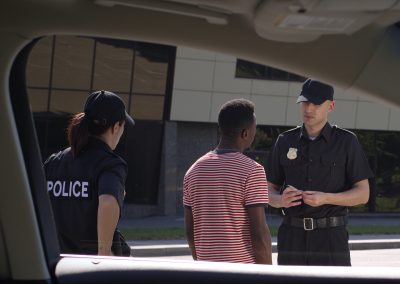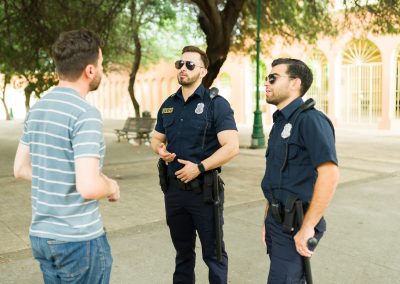Unless you’ve been hiding under a rock somewhere, you know a lot of recent incidents have brought police use of force to the forefront of the national conscience. Task-forces have been formed, agencies are reviewing their polices, and communities are demanding that officers be retrained—even in cases where there is no evidence of wrongdoing by police.
Chief among the cries for reform are demands that police officers be required to use “minimal force” when dealing suspects. On its face it sounds pretty good. In fact, it would be difficult to find an officer who has not read or heard of a policy that states, in effect: “The officer shall use the minimal amount of force necessary to effect their lawful law enforcement objectives.” But should police be trained to use minimal force?
To answer this question, I think it’s smart to refer to the ultimate authority on use of force, the U.S. Supreme Court. In the preeminent case on the topic, Graham v. Connor (1989), the Court ruled that an officer’s use of force must be “objectively reasonable” based upon the totality of circumstances know to the officer at the moment force was used. It further states “The ‘reasonableness’ of a particular use of force must be judged from the perspective of a reasonable officer on the scene, rather than with the 20/20 vision of hindsight.” Nowhere in the text are the words minimum or minimal found. It’s clear: The standard is “reasonableness,” not minimal force.
So what’s the difference?
Minimal vs. Reasonable
I’ve heard it hundreds of times over the years: “Minimal, reasonable—it’s basically the same thing, right? It’s just semantics.”
No, I say, the difference is huge.
I’ve been asked: “Why do you make such a big deal about it?” My answer: Because words matter. Minimal and reasonable don’t have the same meaning.
In fact, the meaning is quite different. Merriam Webster defines minimal as “barely adequate.” You read that right: “barely adequate.” So, what the policy actually says is “the officer shall use that amount of force that is barely adequate to affect their lawful law enforcement objective.” How does that make you feel? How do you even attempt to use barely adequate force?
On the other hand, Merriam Webster defines reasonable as “not extreme or excessive.” Isn’t that what we want from our officers?
Maybe you don’t buy the argument about the definitions of reasonable and minimal I described above. Fair enough. Consider this: Minimal force is also inconsistent with the Court’s prohibition on 20/20 hindsight. Notice the Court didn’t suggest that hindsight should not be used. It didn’t say “as a general rule” hindsight should not be used. No—the use of 20/20 hindsight to determine reasonableness is prohibited by the Court. The only way to determine minimal with certainty in any given situation would be through the 20/20 vision of hindsight, in direct conflict with the guidance of the Court.
I often hear administrators, civilians, and other officer’s comment after an incident “the officer should have done __ or __.” This or that, but never what the officer actually did.
The problem with such statements is that they often rely completely on hindsight. The question isn’t what the officer “should” have done, but rather: Were the officer’s actions reasonable based upon the totality circumstances known to them at the time? The first statement uses hindsight. The second statement uses the language of the U.S. Supreme Court.
Conclusion
When the Court is so clear on the issue, why do some seem so eager to deviate from the standard they lay forth? Do we teach officers to be barely adequate in determining probable cause? Do we teach officers to be barely adequate in providing Miranda rights during a custodial interview? I hope not.
So if we follow the guidance of the Supreme Court on all other matters of law, why do we not apply the same standard for use of force? The Court is very clear on the standard for use of force in this country. It’s objective reasonableness, not minimal force, and that’s a very big distinction.
I think it’s time we start to listen to the Court. Don’t you?










0 Comments